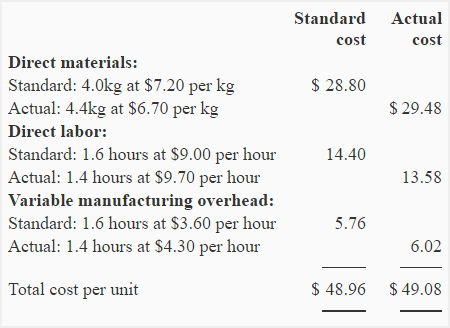
Banks can also make errors, and if the mistake can’t be identified, contact the bank. Keeping track of the entire reconciliation process is crucial for reporting https://www.kelleysbookkeeping.com/what-is-the-purpose-of-contra/ errors and corrections to the management team later. Documentation also helps non-reconciliation employees cross-check data and refer back to source documents.
How Often Should You Reconcile Your Bank Account?

For most companies, bank reconciliation should be prepared once a month. Consider an accounting team at a mid-sized company that needs to perform bank reconciliation on a monthly basis. This task is essential to ensure that their financial records are accurate and up-to-date. You only need to reconcile bank statements if you use the accrual method of accounting.
Helpful Tips for Bank Reconciliation Adjustments
First, make sure that all of the deposits listed on your bank statement are recorded in your personal record. If not, add the missing deposits to your records and your total account balance. Book transactions are transactions that have been recorded on your books but haven’t cleared the bank. As a small business, you may find yourself paying vendors and creditors by issuing check payments. After you’ve checked all the deposits and withdrawals, your business bank balance should match the totals in your business accounts.

Would you prefer to work with a financial professional remotely or in-person?
- Book transactions are transactions that have been recorded on your books but haven’t cleared the bank.
- Eric is an accounting and bookkeeping expert for Fit Small Business.
- It can also adjust the balances to the bank statement to reach the adjusted bank book balances instead.
- However, as a business owner, it’s important to understand the reconciliation process.
- First, bank reconciliation statements provide a mechanism of internal control over cash.
Therefore, unrecorded differences will change the balance in the bank book of the company. Since these differences alter the balance on the bank book, the adjustments need to take place before further reconciliation takes place. Timing differences are items that cause a difference between the balances in the bank statement and bank book due to the timing of transactions. These differences generally comprise two types of items, outstanding checks, and deposits in transits, also known as outstanding lodgments. An outstanding check is a check that a company pays another party, but the party does not present it to the bank.
It ensures that all cash transactions are accounted for and justified. Without preparing a timely bank reconciliation, you risk your business losing cash without you knowing. With QuickBooks Online, it’s even easier to reconcile difference between accounting concept and convention with table bank accounts because you only need to tick transactions until the cleared balance matches the statement balance. You must post the journal entries of all the adjustments made to the balance as per the cash book.
Automate the process

A bank reconciliation should be prepared periodically to ensure accurate financial records. This practice is essential for maintaining the financial health and integrity of your business. Non-sufficient funds (NSF) checks are recorded as an adjusted book-balance line item on the bank reconciliation statement.
It is done periodically to check whether the bank-related transactions are recorded properly in your books of accounts. All deposits and withdrawals undertaken by the customer are recorded both by the bank as well as the customer. The bank records all transactions in a bank statement (also known as passbook) whereas the customer records all their bank transactions in a cash book. Bank reconciliation is a time-consuming process often prone to human errors. When you compare bank account balances with the organization’s books, these figures need to match.
This way, you can ensure your business is in solid standing and never be caught off-guard. Finally, compare your adjusted bank balance to your adjusted book balance. Since you’ve already adjusted the balances to account for common discrepancies, the numbers should be the same. So, as of May 31, the company’s ledger or cash account shows a debit balance of $7,000. The bank reconciliation statement explains the difference between the balance in the company’s records and the balance in the bank’s records. Checks which have been written, but have not yet cleared the bank on which they were drawn.
Similarly, they may consist of deposits that other parties deposit into the bank account without notifying the company. Unrecorded items are different from timing differences as the company needs to record these differences in its bank book as well. Therefore, unrecorded differences will have an accounting treatment.
After adjustments are made, the book balance should equal the ending balance of the bank account. After recording the journal entries for the company’s book adjustments, a bank reconciliation statement should be produced to reflect all the changes to cash balances for each month. This statement is used by auditors to perform the company’s year-end auditing. Cloud accounting software like Quickbooks makes preparing a reconciliation statement easy.
Reconciling bank statements with cash book balances helps you, as a business, to know the underlying causes that lead to such differences. Reconciling your bank account should be done monthly to catch discrepancies early and keep financial records accurate. Businesses with high volume of transactions must reconcile their bank statements weekly or daily to manage cash flow efficiently. In short, how often a company should prepare bank reconciliations depends on the level of activity in its bank accounts.
Typically, the difference between the cash book and passbook balance arises due to the items that appear only in the passbook. Therefore, it makes sense to first record these items in the cash book to determine the adjusted balance of the cash book. As mentioned above, debit balance https://www.intuit-payroll.org/ as per the cash book refers to the deposits held in the bank. This balance exists when the deposits made by your business at your bank are more than the withdrawals. The final step in the bank reconciliation process is to record journal entries to complete the balancing process.

